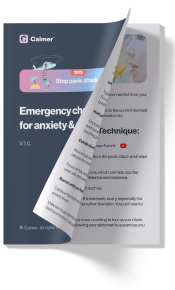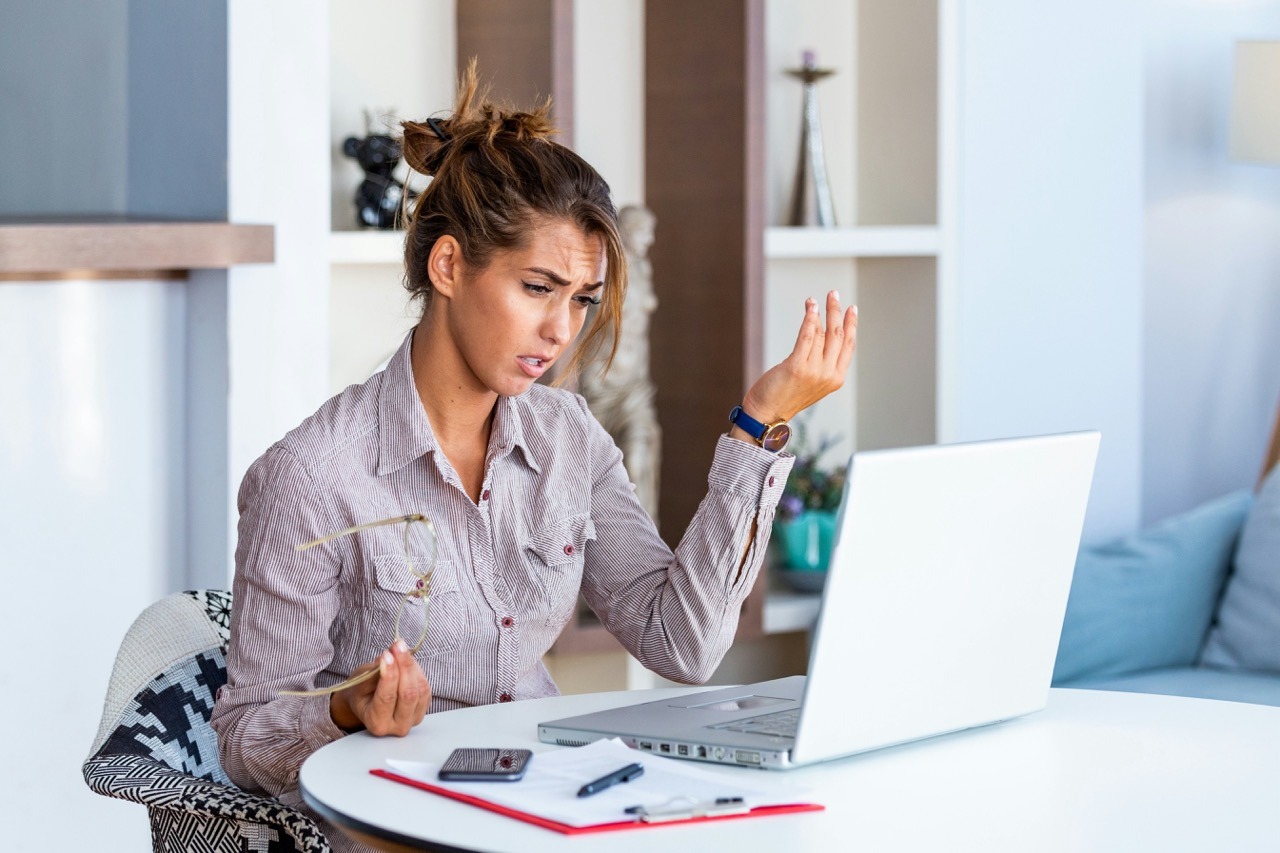Key Takeaways:
- Hyperstimulation anxiety signifies an excessive stress response, causing intense nervousness
- Symptoms mirror those of other anxiety disorders, impacting daily functioning
- Recognizing triggers and seeking a thorough assessment are vital for management
- There are ways to cope and manage your anxiety
Are you incredibly stressed for a long time now? You might not know this, but you could end up with hyperstimulation anxiety.
But what is it exactly and, most importantly, how can you manage it?

What is Hyperstimulation Anxiety?
Imagine your brain has a panic button. When you’re stressed, this button gets pushed a lot, and your brain goes into overdrive, making you feel super worried and scared. That’s what we call hyperstimulation anxiety.
People with this kind of anxiety often experience symptoms similar to other anxiety disorders. It can also mess with their work and personal life, so they don’t get things done in time or start isolating themselves.
To deal with hyperstimulation anxiety, you’ve got to figure out what’s causing it. It could be anything from genetics to stress from your surroundings. But more on that below.
And what about symptoms? Well, symptoms of hyperstimulation anxiety mirror those of general anxiety disorders, including rapid heartbeat, sweating, and feelings of dread.
A review by Bandelow and Michaelis in Lancet Psychiatry (2015) outlines these symptoms thoroughly, emphasizing the importance of recognizing the physical manifestations of anxiety.
But first of all, let’s get on the same page about what your body’s stress response looks like.
Anatomy of the Stress Response
I’ll try to describe it as simply as possible.
When I feel like there’s danger, my body jumps into action. There’s this part of my brain called the amygdala that acts like an alarm system. It sends out a signal to another part called the hypothalamus.
This part then talks to the rest of my body through something called the autonomic nervous system.
Together, they get my body ready to either fight or run away – it’s called the fight-or-flight response.
This involves pumping stress hormones like cortisol and adrenaline into my body. These hormones make me more alert, make my heart beat faster, and make my muscles tense up, all to help me deal with the threat.
I hope that makes it a bit clearer now without using too much scientific terminology, so let’s dive in deeper into common triggers of hyperstimulation anxiety.
Identifying Common Triggers
Triggers vary widely; however, they often share a common trait: the ability to provoke a rapid release of stress hormones.
For you, this should be your first step, as recognizing these triggers is key to managing responses. Here are just some examples:
- Sudden, loud noises startle the brain into alert mode
- Circumstances evoking past traumatic events, which the brain links to anxiety
- The prospect of social interactions, which can overwhelm those with certain anxiety disorders
Sensory Input and Overstimulation
When you get too much information from your senses—like seeing, hearing, and feeling things—it can overwhelm your brain.
This overload can make you feel bombarded, kind of like when you’re anxious or dizzy.
For example, being in a really crowded and noisy place can stress you out. It’s hard to focus, and you feel almost frozen because there’s just too much going on.
Studies have shown that this kind of sensory overload can mess with your thinking and make you feel more anxious.
Stress and Anxiety Disorders
When it comes to stress and anxiety disorders, they’re closely linked to hyperstimulation anxiety. Stress is normal when it happens in short bursts, like when you’re facing a challenge.
But if it sticks around too long, it can make anxiety disorders worse. These disorders mess with your brain chemistry, making you more sensitive to things that overwhelm your senses.
Now, let’s talk about symptoms and diagnosis.
Symptoms and Diagnosis
Physical and Emotional Symptoms
Hyperstimulation anxiety comes with a bunch of physical symptoms. Your heart can beat really fast, your muscles might feel tight, you get headaches a lot, and your body might shake on its own.
Some people even feel like they’re tingling. These physical signs often go along with strong emotions like fear, being easily annoyed, or feeling like something bad is about to happen.
Recognizing Anxiety Symptoms
I can tell when anxiety is happening because it usually shows up when someone is super stressed or worried.
It’s important to tell the difference between regular anxiety or panic attacks and hyperstimulation anxiety because the second one has more obvious physical effects like a racing heart and tense muscles that can mess up everyday life.
Diagnosing Hyperstimulation Anxiety
To figure out if someone has hyperstimulation anxiety, doctors need to look at all the symptoms and the person’s medical history really carefully.
They might use special tests to measure how severe the anxiety is and how often it happens, focusing on symptoms like trembling and shaking.
This helps them make the right diagnosis.
Treatment and Management
To deal with hyperstimulation anxiety, it’s important to use a mix of therapies, medication, and changes in your lifestyle.
These approaches tackle the many aspects of the condition and help you learn how to cope and get better from this kind of anxiety.
Psychological Therapies
Cognitive-behavioral therapy (CBT) works really well for anxiety caused by sensory overload. It helps people recognize and change the thoughts that make them anxious.
In therapy sessions, you learn to turn negative thoughts into more positive and realistic ones. Mindfulness is also a big part of this therapy, as it’s about being aware of the present moment.
Practices like meditation and yoga help you focus on what’s happening now, which can help reduce stress from overwhelming things.
Studies have shown that both CBT and mindfulness are great for managing anxiety disorders.
Research published in Psychiatric Research backs this up, confirming that CBT is effective in treating various anxiety disorders, including hyperstimulation anxiety.
Medication and Supplements
Medications prescribed by doctors, like anti-anxiety pills and antidepressants, are also often part of the treatment plan.
When you talk about these options with the doctor, they’ll stress the importance of weighing the pros and cons.
Some supplements, like omega-3 fatty acids, can also help with mental health, but it’s always smart to check with a doctor before trying them out.
Here are some other helpful supplements:
Vitamin D: Low levels of vitamin D have been linked to mood disorders, so getting enough of it through supplements or sunlight exposure can be beneficial.
Magnesium: This mineral plays a role in regulating neurotransmitters and can help reduce anxiety and promote relaxation.
B vitamins: B vitamins, especially B6, B9 (folate), and B12, are important for brain health and may help alleviate symptoms of depression and anxiety.
L-theanine: Found in green tea, L-theanine can promote relaxation and reduce stress and anxiety without causing drowsiness.
Probiotics: Gut health is closely linked to mental health, so taking probiotics to support a healthy gut microbiome may indirectly improve mood and reduce anxiety.
Remember to always consult with a healthcare professional before starting any new supplement regimen, as they can provide personalized recommendations based on your individual needs and health status.
Lifestyle and Relaxation Techniques
If you want to ease your symptoms, you need to develop a routine that includes certain lifestyle changes and relaxation methods.
You need to exercise regularly and get enough sleep. Deep breathing exercises can also calm your mind, help you fall asleep, and reduce your stress levels.
But the most important thing is to be consistent with these things. You need to stick to these practices no matter what to create a peaceful inner environment that’s good for managing anxiety.
Now, let me talk a bit more about managing and coping with HA.
Coping Strategies
When dealing with hyperstimulation anxiety, there are evidence-based methods proven to work in psychological studies.
These strategies are designed to lower the levels of stress hormones and help you control your emotions better.
Exercise and Physical Activity
Regular exercise should be a big part of dealing with hyperstimulation anxiety. Physical exercise lowers the levels of stress hormones like adrenaline and cortisol in your body.
At the same time, it boosts the production of endorphins, which are chemicals in the brain that make me feel better and less sensitive to pain.
So, basically, exercise helps you relax and feel better overall.
Emotion Regulation and Mindfulness
To stay calm and deal with emotions better, try mindfulness. It means focusing on what’s happening right now.
When I do mindfulness meditation, I pay attention to my breathing and this helps me notice my thoughts and feelings without judging them.
These practices really help me handle my emotions and lower stress.
Support Systems and Professional Help
It’s important to have a strong support system, which can include getting help from a mental health expert if you need it.
Cognitive-behavioral therapy (CBT) is helpful because it helps you recognize and change negative thoughts that make you anxious.
Talking about your struggles with friends, family, or support groups can also give you new ways to deal with things.
And if you need more help, reaching out to a professional means you’ll get personalized strategies to help you feel better mentally.
Prevention and Resilience Building
When dealing with hyperstimulation anxiety, your main focus should be on reducing stress and building up resilience.
This will help lessen the effects of stress and make it harder for stress to turn into anxiety.
So here are just some things you should try:
Set boundaries: Learn to say no to commitments or activities that cause excessive stress or overwhelm you. It’s okay to prioritize your well-being.
Establish a routine: Having a regular schedule for activities like sleep, meals, exercise, and relaxation can provide a sense of stability and predictability, which can help reduce anxiety.
Stay connected: Maintain relationships with supportive friends and family members who can offer understanding, encouragement, and a listening ear when you need it.
Take care of your physical health: Regular exercise, healthy eating, adequate sleep, and avoiding substances like alcohol and caffeine can all contribute to better overall well-being and resilience against stress.
Practice relaxation techniques: Deep breathing, meditation, progressive muscle relaxation, and mindfulness can all help calm your mind and body during times of stress.
Frequently Asked Questions
What are the most effective treatments for managing hyperstimulation anxiety?
For managing hyperstimulation anxiety, strategies often involve cognitive-behavioral therapy (CBT) and mindfulness practices. CBT helps individuals alter thought patterns that contribute to anxiety, whereas mindfulness encourages a focus on the present moment, reducing overall arousal.
Can certain medications relieve the symptoms of hyperstimulation anxiety?
Yes, physicians may prescribe anti-anxiety medications or antidepressants to alleviate symptoms. These medications function by adjusting neurotransmitter levels in the brain, thus influencing mood and anxiety levels.
How long can hyperstimulation anxiety symptoms last?
The duration of symptoms varies widely between individuals. Some may experience anxiety for short periods, potentially minutes or hours, while others might endure symptoms for much longer. These timelines depend on various factors, including triggers and personal coping skills.
What are the common symptoms associated with hyperstimulation anxiety?
Common symptoms often include elevated heart rate, difficulty concentrating, restlessness, and rapid breathing. These manifestations occur due to the body’s heightened response to perceived threats in the environment, preparing one for ‘fight-or-flight.’
How can you calm sensations of hyperstimulation anxiety?
One might find respite through deep-breathing exercises, progressive muscle relaxation, or exposure to calming environments. Such practices help regulate the nervous system and may reduce feelings of being overwhelmed.
How can hypersensitivity contribute to anxiety, and what are the ways to mitigate it?
Hypersensitivity, or increased sensory sensitivity, often leads to anxiety as it can make the environment feel overly stimulating. To mitigate this, one may employ sensory-integration techniques or create a personalized sensory profile to understand and manage their triggers.




